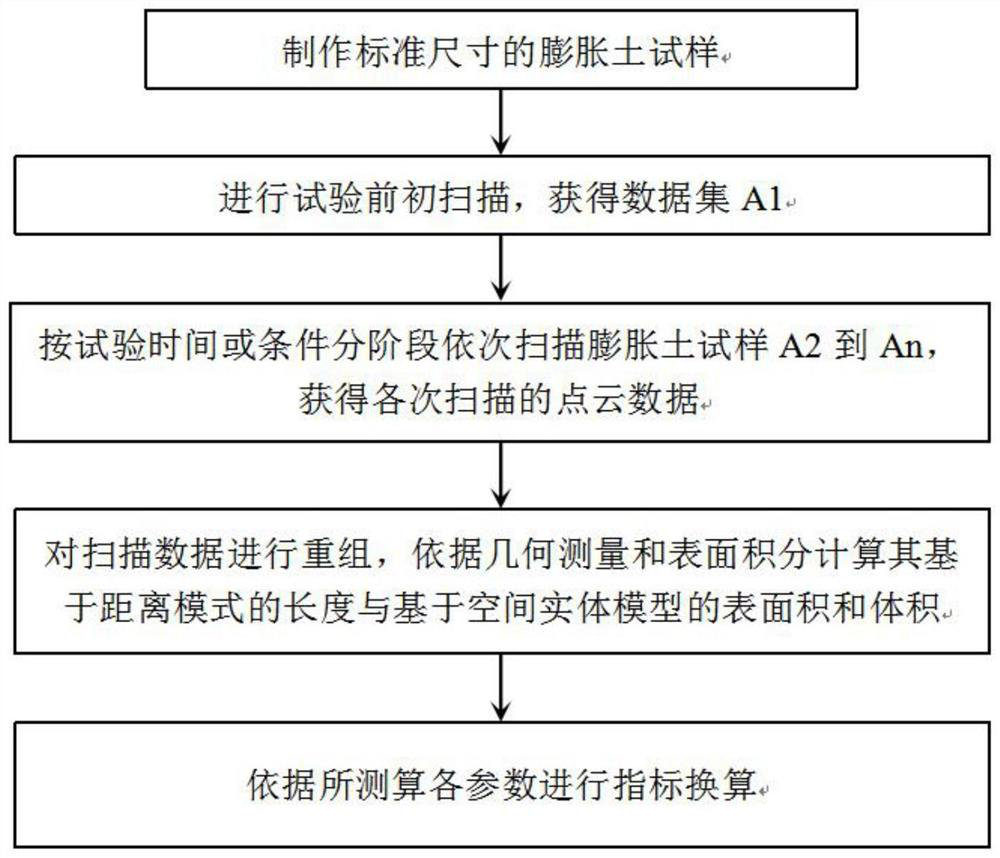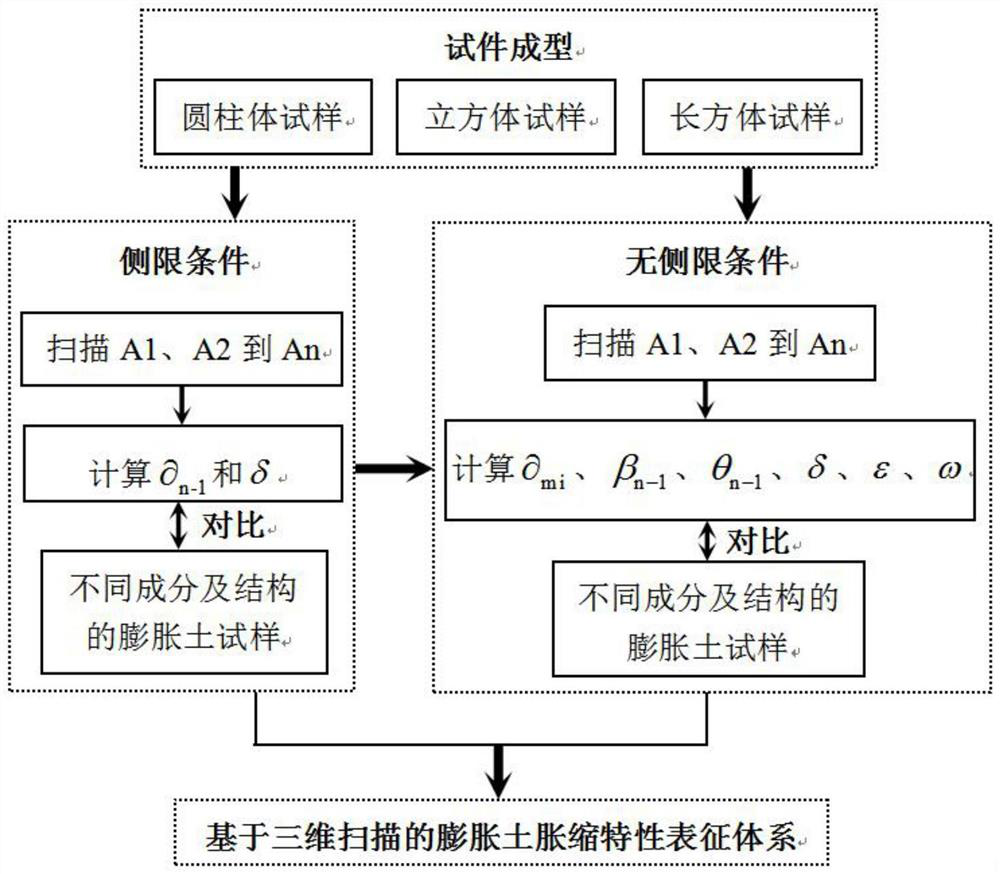Method for testing and evaluating swelling and shrinkage characteristics of expansive soil based on three-dimensional scanning
A technology of characteristic testing and three-dimensional scanning, which is applied in the field of geotechnical engineering, can solve the problems that the control measurement of expansive soil cannot be realized, the overall properties of the soil are not considered, and the shape of expansive soil cannot be obtained by measurement methods, so as to achieve better test and evaluation results. It has the effects of reliability, fast scanning speed and avoiding secondary interference
- Summary
- Abstract
- Description
- Claims
- Application Information
AI Technical Summary
Problems solved by technology
Method used
Image
Examples
Embodiment 1
[0063] This embodiment is a three-dimensional scanning-based test for positive expansion characteristics of expansive soil and its evaluation method. The scanning and parameter acquisition processes are as follows: figure 1 shown, including the following steps:
[0064] S1. Make the standard sample of expansive soil as a cuboid, specifically a small cuboid of 40mm×40mm×160mm.
[0065] S2. Scan the formed cuboid specimen. Unconfined expansive soil specimens were used as scanning objects. For the unconfined expansive soil specimen, the surface scan (except the bottom surface) is mainly performed to obtain the surface point cloud data of its expansion in space.
[0066] When scanning, first place the newly formed expansive soil sample lightly on the horizontal platform, and stick markers around the platform for position identification and positioning; secondly, a handheld high-precision three-dimensional laser scanner is used to detect the external The surface is scanned in al...
Embodiment 2
[0080] This example is the same as Example 1, except that the test scheme is the reverse shrinkage characteristic test of expansive soil and its evaluation method.
[0081] Other operation procedures and specific technical solutions are the same as those in Example 1, and the calculation formulas for each index are the same as those in (1) to (6) in Example 1.
[0082] in, β(t) and θ(t) are the correlation functions of the shrinkage coefficient of the sample changing with time t. Here, the dependent variable time t can be changed to other test conditions (such as initial moisture content, dry density, etc.) according to the test content.
[0083] In Example 1, the formulas (1) to (6) were all changed to the calculation formulas of the relevant indexes in the reverse shrinkage test of the sample. That is, first measure the sample in the saturated state or in a certain expansion state for test measurement, and then measure the shrinkage of the sample with the change of time or...
Embodiment 3
[0085] This example is the same as Example 1, except that the tested expansive soil sample is a standard cube specimen, specifically a small cube of 40mm×40mm×40mm.
[0086] Other operating procedures and specific technical solutions are the same as in Example 1.
PUM
| Property | Measurement | Unit |
|---|---|---|
| diameter | aaaaa | aaaaa |
| diameter | aaaaa | aaaaa |
| diameter | aaaaa | aaaaa |
Abstract
Description
Claims
Application Information
 Login to View More
Login to View More - R&D
- Intellectual Property
- Life Sciences
- Materials
- Tech Scout
- Unparalleled Data Quality
- Higher Quality Content
- 60% Fewer Hallucinations
Browse by: Latest US Patents, China's latest patents, Technical Efficacy Thesaurus, Application Domain, Technology Topic, Popular Technical Reports.
© 2025 PatSnap. All rights reserved.Legal|Privacy policy|Modern Slavery Act Transparency Statement|Sitemap|About US| Contact US: help@patsnap.com



